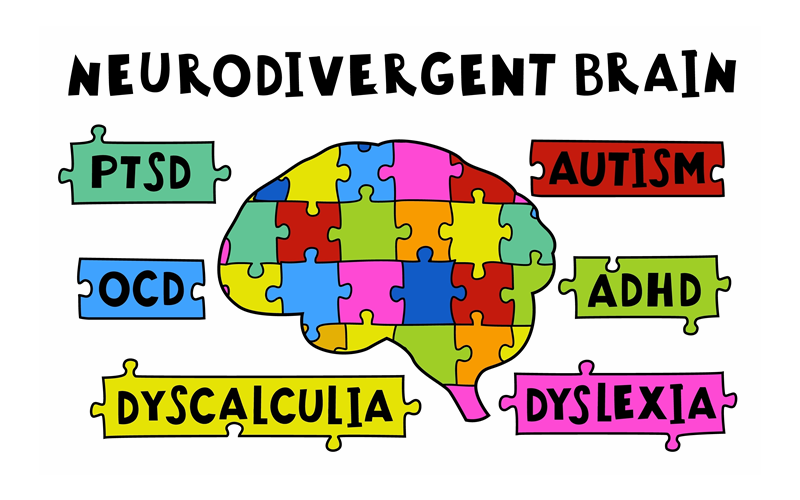Recognising, Understanding, and Managing Autism: A Comprehensive Guide for Families and Caregivers
Autism Spectrum Disorder (ASD) is a complex neurodevelopmental condition that affects how individuals communicate, behave, and interact with others. It’s called a “spectrum” because it includes a wide range of symptoms and abilities, making each person with autism unique.
Whether you suspect that a family member may be on the autism spectrum or you’re a professional seeking a better understanding, this guide will help you recognise the signs of autism, understand its challenges and strengths, and provide practical strategies for managing it in everyday life.
Recognising Autism: Early Signs and Indicators
The early signs of autism often appear in childhood, usually before the age of 3. However, because autism is a spectrum, these signs can vary widely from one person to another.
Early recognition can lead to early intervention, which is key in helping an autistic individual develop essential life skills.
Common Signs of Autism:
Social Difficulties: One of the hallmark signs of autism is difficulty with social interaction. Autistic individuals may avoid eye contact, struggle to understand social cues (like facial expressions or body language), or prefer to play alone rather than with others.
Communication Challenges: Some autistic individuals may experience delayed speech or language development. Others might speak fluently but have difficulty with back-and-forth conversations, take things very literally, or struggle to understand nonverbal cues.
Repetitive Behaviours: Many people with autism engage in repetitive behaviours, such as hand-flapping, rocking, or repeating phrases (known as echolalia). They may also have strict routines and become upset when these are disrupted.
Sensory Sensitivities: Autistic individuals often have heightened or reduced sensitivities to sensory stimuli. This can include being overwhelmed by loud noises, bright lights, or certain textures, or alternatively, not reacting as expected to pain or extreme temperatures.
Practical Tips for Recognising Autism:
Observe Consistent Patterns: Autism often reveals itself through repetitive behaviours or consistent difficulties in social communication. Keep a journal of any behaviours that seem out of the ordinary and note when they occur.
Ask for Professional Input: If you notice signs in a loved one, reach out to a healthcare professional for an assessment. A developmental pediatrician, psychologist, or speech therapist can provide a formal evaluation and diagnosis.
Pay Attention to Developmental Milestones: Missing developmental milestones, such as delayed speech or difficulty engaging in pretend play, can be early indicators of autism.

Understanding Autism: Embracing Neurodiversity
Key Areas to Understand:
- Strengths and Challenges: Every autistic individual has unique strengths and challenges. Some may excel in areas like math, music, or memory, while facing difficulties with social interaction or emotional regulation.
- Communication Styles: Understanding how an autistic person prefers to communicate can improve relationships. Some may communicate better through writing than speaking, while others may rely on assistive technology or pictures to express themselves.
- Sensory Processing: Sensory sensitivities can significantly impact daily life. For example, a child might feel overwhelmed in a noisy classroom, while an adult might find certain fabrics unbearable to wear.
Practical Tips for Understanding Autism:
- Embrace the Individual’s Strengths: Focus on what the autistic person is good at, rather than only addressing their challenges. This positive approach can help them build confidence and a sense of self-worth.
- Educate Yourself About Neurodiversity: Understanding autism as a natural variation in human development can help you approach the condition with empathy and openness. Reading books, listening to podcasts, or attending webinars from autistic individuals and professionals can expand your understanding.
- Be Patient: Communication and social skills may take time to develop. Be patient and allow the autistic individual to process information at their own pace.

Managing Autism: Practical Strategies for Support
While every autistic person is different, certain strategies can help manage the challenges that often accompany autism, from difficulties with sensory processing to emotional regulation.
The key to managing autism is to create supportive, predictable environments that allow individuals to thrive.
Actionable Methods to Support Autism:
- Create a Structured Routine: Autistic individuals often find comfort in routines, as predictability can reduce anxiety. Create a daily schedule with visual aids (like pictures or charts) that outline activities, from waking up to bedtime. Consistency helps them feel safe and in control.
- Use Clear and Direct Communication: Whether you’re speaking with a child or an adult on the autism spectrum, clear, simple, and direct language is often the most effective way to communicate. Avoid abstract concepts, sarcasm, or figurative language that may be confusing.
- Sensory-Friendly Environments: Since many autistic individuals have heightened sensitivities, consider adapting their environment to reduce sensory overload. This could mean creating a quiet, calm space at home or using noise-canceling headphones when out in public.
- Develop Coping Strategies for Emotional Regulation: Emotional meltdowns or shutdowns are common in autism, especially when someone feels overwhelmed. Help the individual learn calming techniques, like deep breathing, using a favourite sensory object (like a weighted blanket or fidget toy), or finding a quiet space to de-escalate.
- Encourage Social Interaction, but Respect Boundaries: Socialising can be difficult for autistic individuals, but it’s important to foster positive relationships. Encourage interaction in small, low-pressure settings, and never force someone to engage beyond their comfort zone. Building confidence in social skills takes time.
- Engage with Special Interests: Many autistic individuals have deep, focused interests in particular subjects or activities. Encourage these interests, as they can be a source of joy and relaxation. These hobbies can also serve as a bridge to connect with others who share the same passion.
Practical Tips for Managing Autism:
- Use Visual Supports: Visual schedules, social stories, or picture cards can be helpful tools in explaining daily tasks or upcoming events, especially for those who are more visually oriented.
- Introduce Changes Gradually: Autistic individuals can struggle with sudden changes. Whenever possible, introduce changes to routines or environments slowly and provide plenty of notice.
- Collaborate with Professionals: Seek support from occupational therapists, speech therapists, or behavioral specialists who can help develop tailored strategies for managing challenges related to autism.

Seeking Support: Where to Find Help
Caring for someone with autism can feel overwhelming at times, but there are many resources available to help you navigate this journey.
Whether you’re a parent, family member, or professional, reaching out for support is an important part of ensuring the best outcomes for the autistic person in your life.
Here are three excellent websites for finding support and guidance:
Autism Speaks
Autism Speaks provides resources on autism diagnosis, treatment, and advocacy. They offer toolkits, guides for families, and information on local services to support individuals with autism.
National Autistic Society
The National Autistic Society is a UK-based organization that offers practical support for autistic individuals and their families. They provide resources on education, employment, and independent living, as well as autism-friendly events and support groups.
Autistic Self Advocacy Network (ASAN)
ASAN is an organization run by autistic individuals that promotes advocacy and rights for people on the autism spectrum. Their website offers valuable resources on understanding autism from a neurodiverse perspective and how to support self-advocacy.
Recognising, understanding, and managing autism is a lifelong journey that requires patience, empathy, and ongoing education. By learning the signs of autism, embracing neurodiversity, and implementing supportive strategies, you can help autistic individuals in your life lead fulfilling, empowered lives.
What is most important to remember is that every person you meet that is on the autistic spectrum is uniquely different, so adapting to a new experience goes a long way to helping them.
“If you’ve met one person with autism, you’ve met one person with autism.” – Dr. Stephen Shore

Dr Sandra Westland is a #1 bestselling author and Advanced Existential Psychotherapist, in full time practice since 1999. She is also co-founder of Self Help School. She previously worked for many years in education as a highly qualified senior teacher in secondary schools, leaving to work in a private psychiatric hospital and then onto becoming a full-time therapist, where she now divides her time between a successful private practice in Essex and online, writing books, courses, and undertaking research in various psychological subjects.

